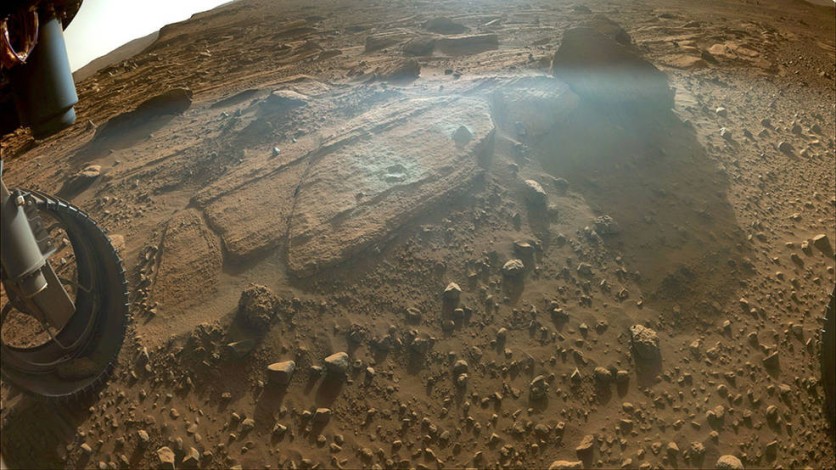NASA's Perseverance Rover has achieved a major milestone in its mission to search for signs of ancient microbial life on Mars by successfully collecting the first Mars sample on Thursday, March 30.
This newest science campaign is exploring the top of Jezero Crater's delta, and the latest sample is the 16th cored rock sample of the mission.

A Rock Called "Berea"
NASA plans to study these Martian samples with powerful lab equipment on Earth to better understand the water cycle that has shaped the planet's surface and interior and to seek evidence of ancient microbial life.
The sample was taken from a rock called "Berea," which the scientific team believes formed from deposits that were carried downstream by an ancient river.
The science team sees great potential in this rock because of its abundant carbonate content. If biosignatures were present in this region of Jezero Crater, they might still be preserved in the carbonate rocks, which on Earth can contain fossilized lifeforms' secrets.
Studying the carbonate in the Berea sample will help researchers better understand how Mars' environment functioned when this region was submerged under liquid water.
As a result of chemical reactions occurring in liquid water, carbonates are formed, giving scientists a long-term record of shifts in the planet's climate.
NASA is optimistic that these samples will help them comprehend what happened in Jezero Crater billions of years ago because of the variety of ecosystems they can monitor and gather samples from.
"The Berea core highlights the beauty of rover missions," Perseverance's project scientist, Ken Farley of Caltech in Pasadena, said in a press release statement.
"Perseverance's mobility has allowed us to collect igneous samples from the relatively flat crater floor during the first campaign, and then travel to the base of the crater's delta, where we found fine-grained sedimentary rocks deposited in a dried lakebed. Now we are sampling from a geologic location where we find coarse-grained sedimentary rocks deposited in a river."
Read Also : NASA Perseverance Rover's Lightsaber Image Excites 'Star Wars' Fans; Here's What the Metal Tube Really Is
Mars Sample Return
As part of the NASA-ESA Mars Sample Return effort, Perseverance recently left ten tubes on the Martian surface as a backup cache in addition to the 19 samples and three witness tubes that it has already collected.
Being the first mission to send samples from another planet back to Earth, NASA's Mars Sample Return campaign will enable researchers to examine the samples in greater detail.
Perseverance will continue to climb Jezero's sedimentary fan in the direction of the following bend in the dry riverbed, which the science team is referring to as "Castell Henllys".
The team will keep examining the samples brought back by Perseverance to uncover the mysteries of Mars and offer fresh perspectives on the planet's evolution.
Related Article : Ancient Sleeping Bacteria from Mars Survived for 280M Years-Will it Contaminate the Earth?

![Apple Watch Series 10 [GPS 42mm]](https://d.techtimes.com/en/full/453899/apple-watch-series-10-gps-42mm.jpg?w=184&h=103&f=9fb3c2ea2db928c663d1d2eadbcb3e52)



